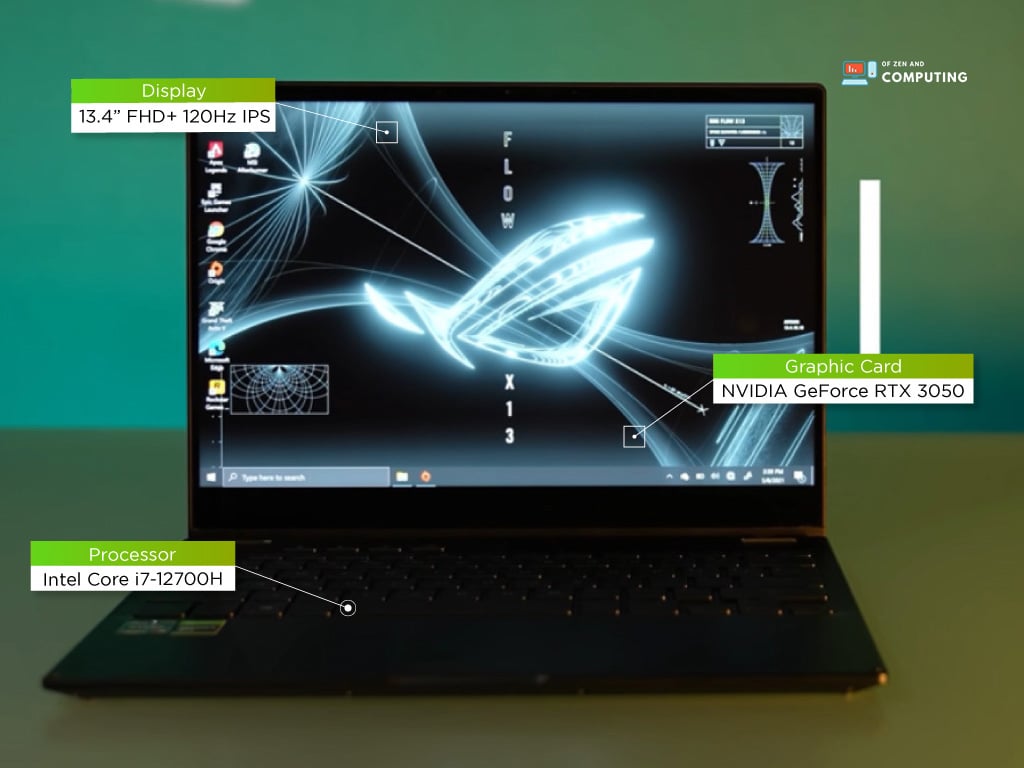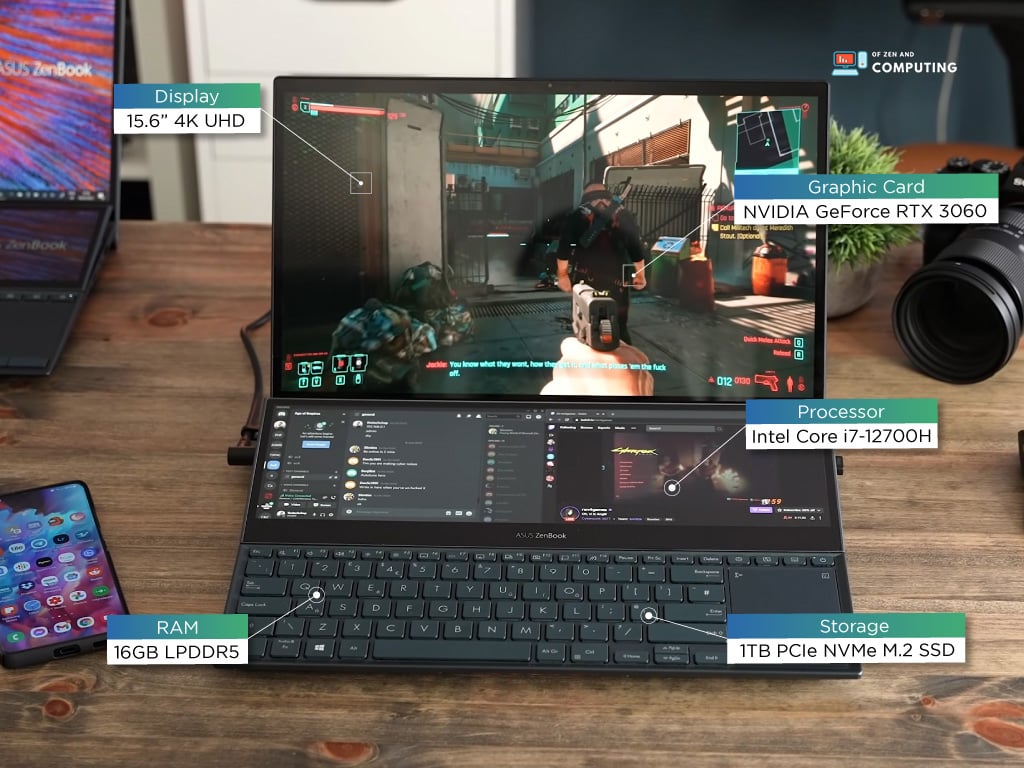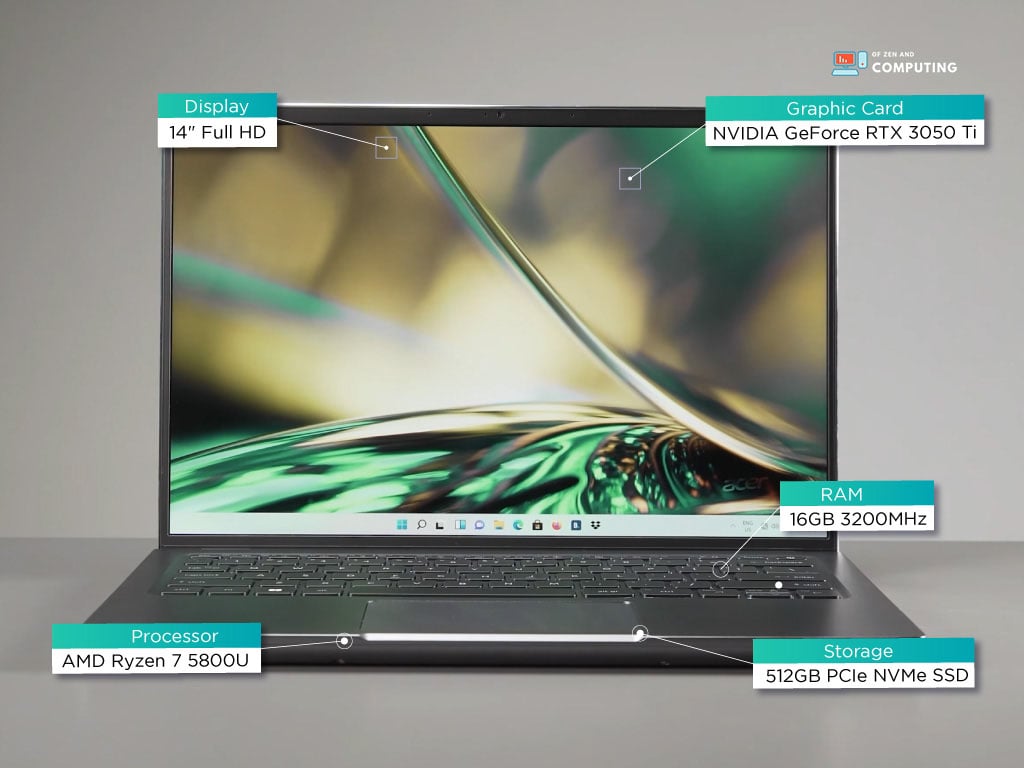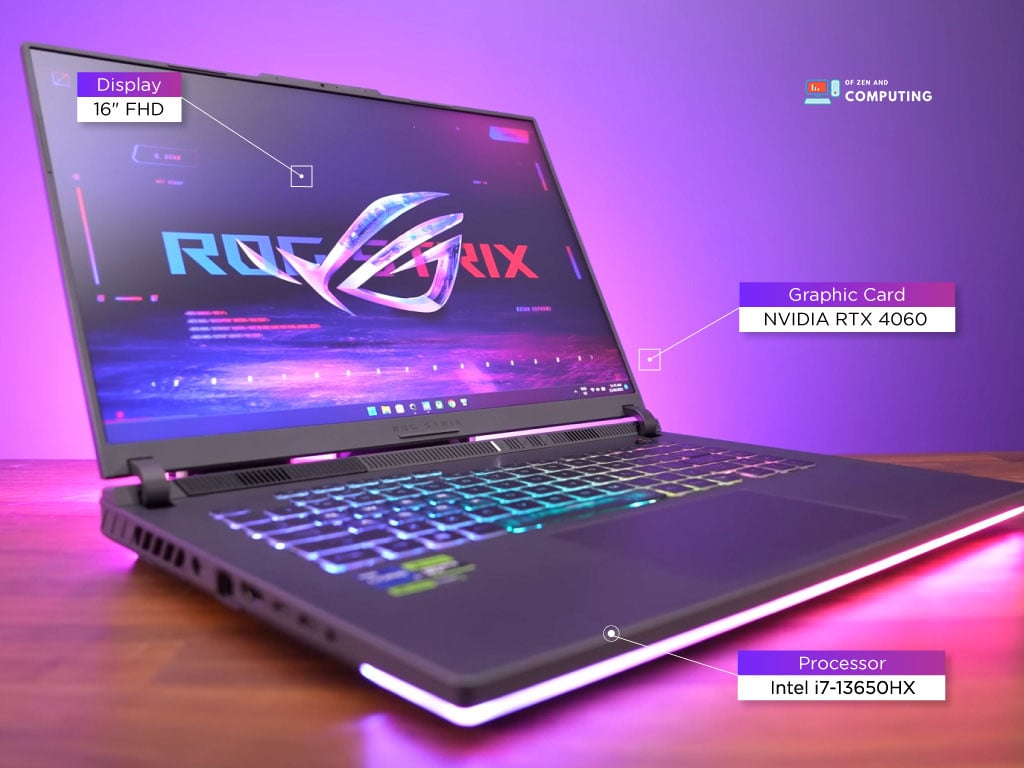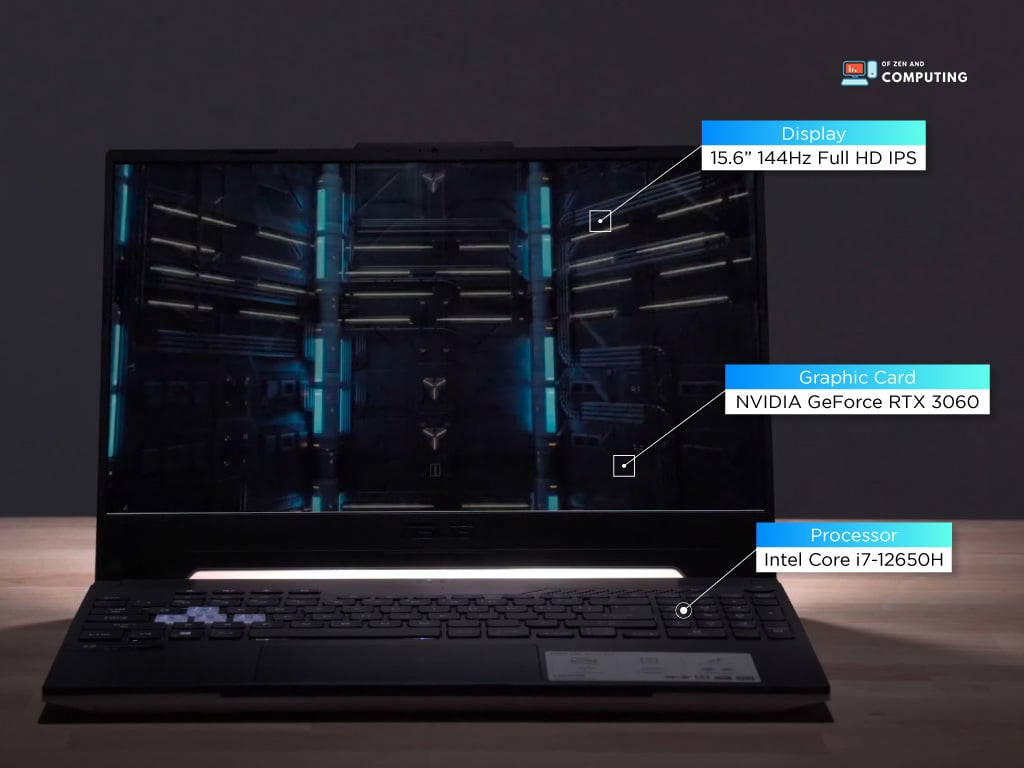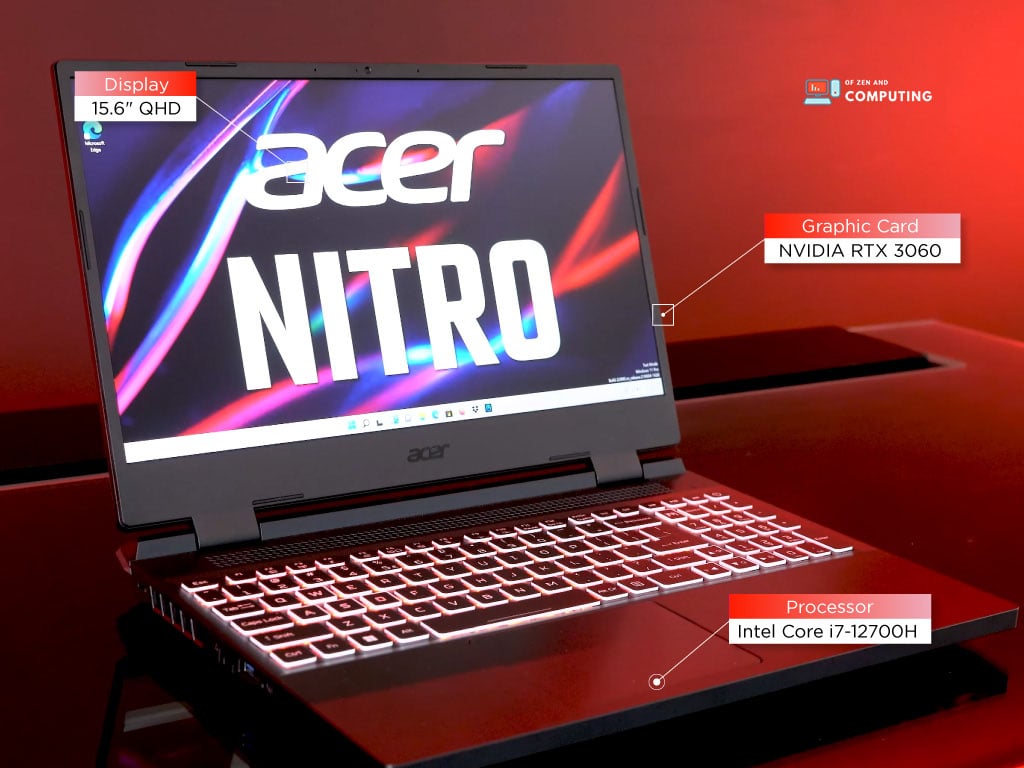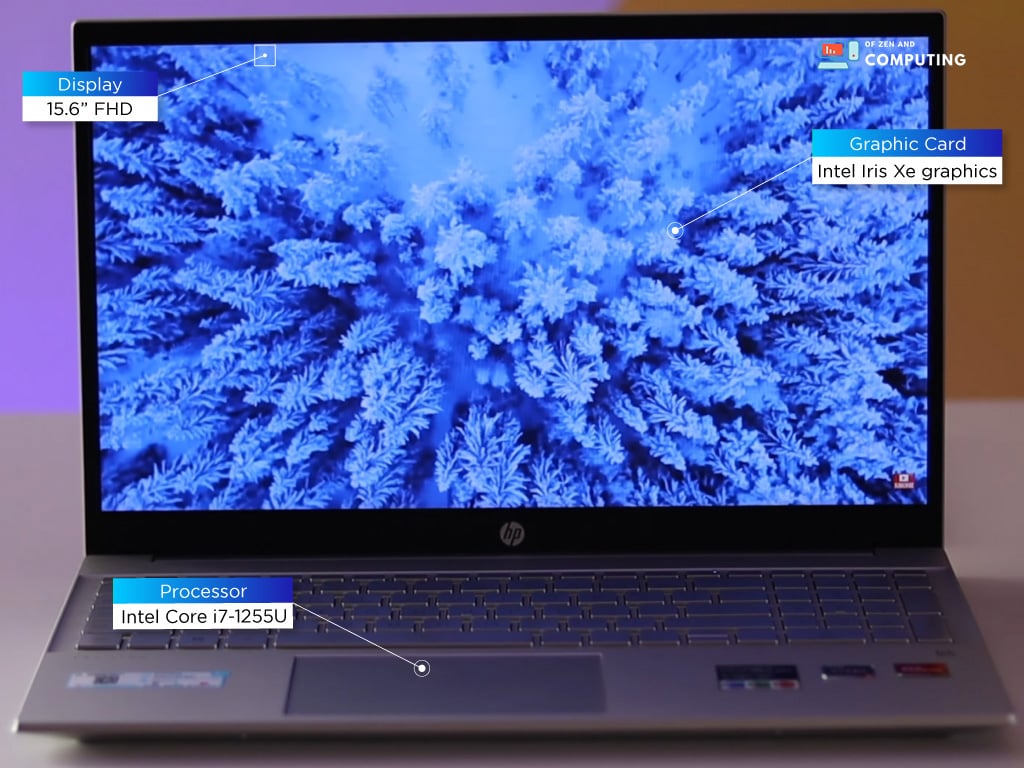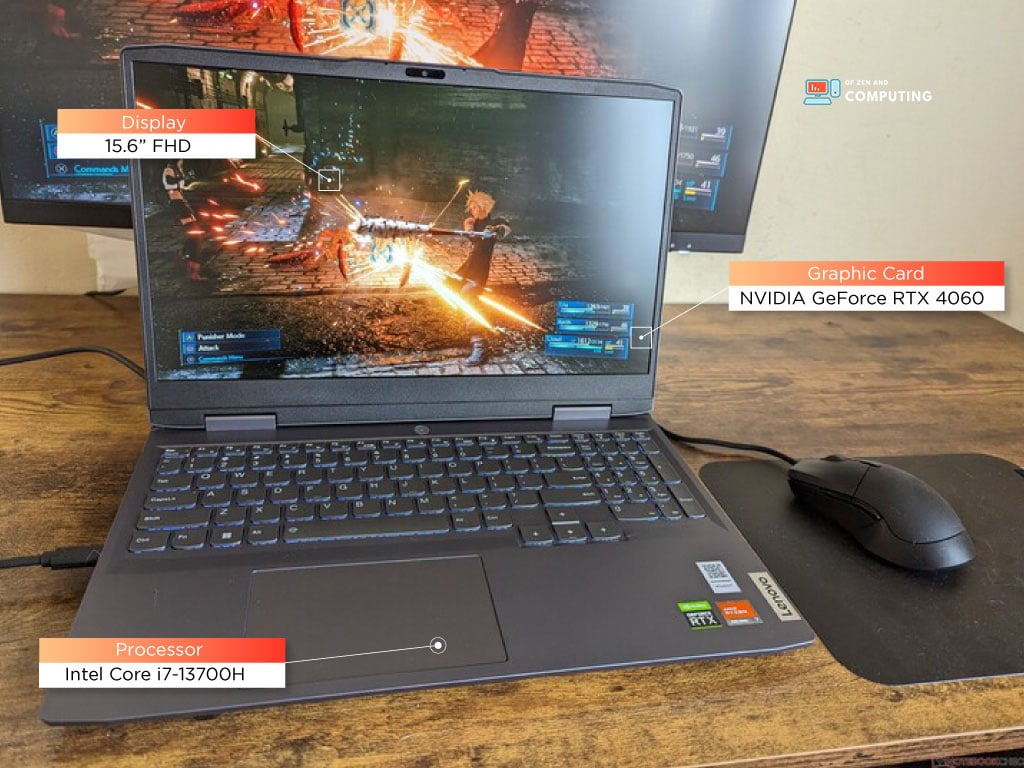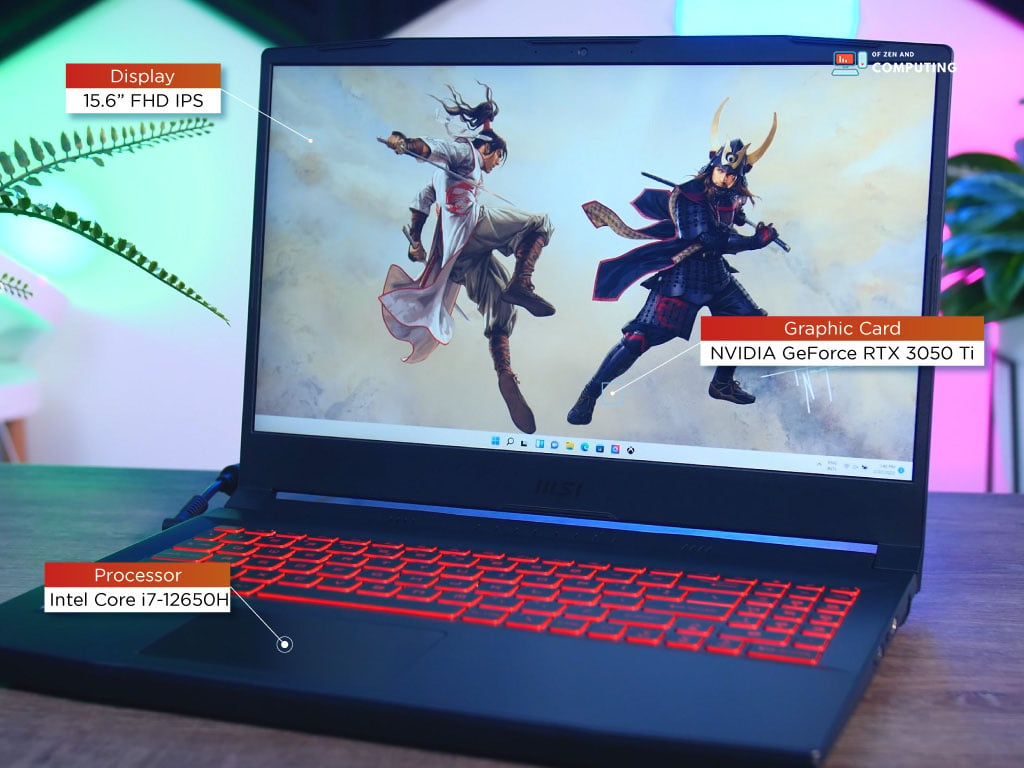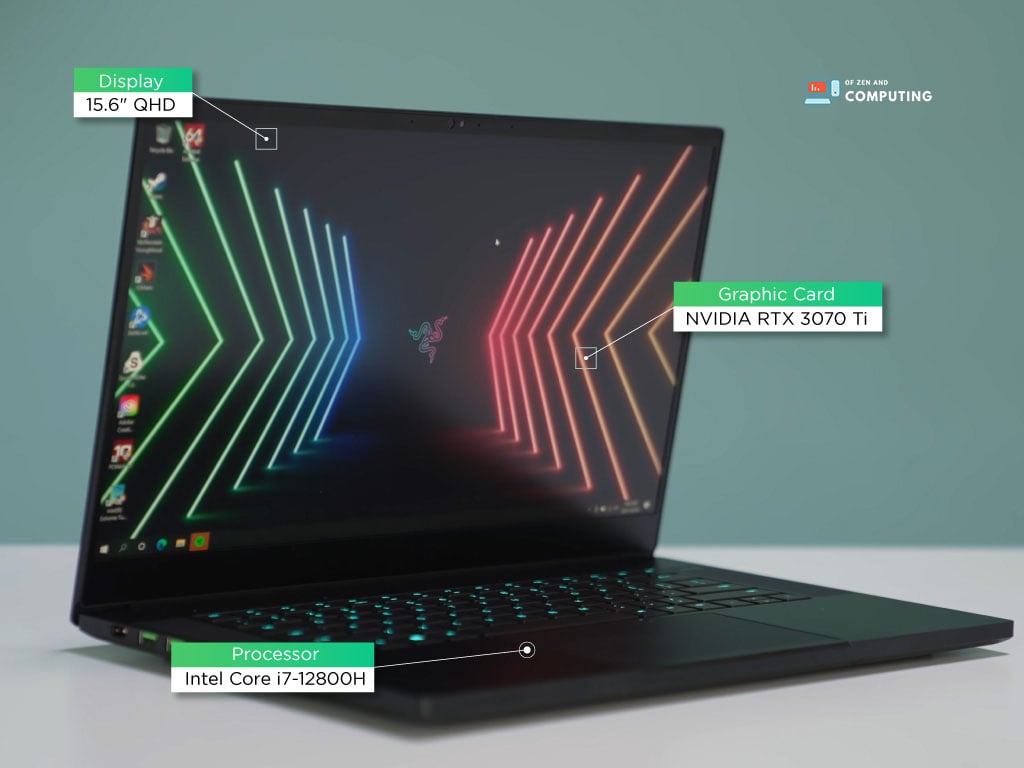10 Best Laptops for Hacking In September 2024 [For Cyber Security]
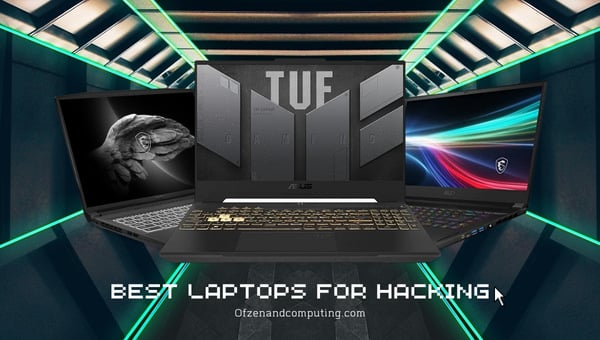
Hackers are becoming more and more sophisticated, and they’re always looking for new ways to exploit vulnerabilities. As a result, it’s important to stay ahead of the curve and get a laptop that’s up to the task.
They want to find out what they can do with it, how they can break through security, and most importantly, if there is anything new that nobody has seen before.
The best laptop for hackers will be one that meets all their needs – from being able to run specific programs without any problems to having enough power under the hood to handle multiple tasks at once. This blog post will go over 10 of the best laptops for hacking.
We have laptops for all types of hackers, from those who need a laptop to work on during the day and then do some hacking at night up to those who are using their laptops as portable devices.
Skip to
10 Best Laptops for Hacking in 2024
I’ve handpicked the top ten laptops that are perfectly tailored for your hacking tasks in 2023. This round-up comprises a mix of both high-end machines for seasoned hackers and budget-friendly options for those who are just getting their feet wet.
| IMAGE | LAPTOP | BUY NOW |
|---|---|---|
ASUS ROG Flow Z13
|
||
ASUS ZenBook Pro
|
||
Acer Swift X
|
||
ASUS ROG Strix
|
||
ASUS TUF
|
||
Acer Nitro 5
|
||
HP Pavilion 15
|
||
Lenovo LOQ
|
||
MSI Katana
|
||
Razer Blade 15
|
So, whether you are a cybersecurity expert or just dipping your toes into the world of ethical hacking, this list has something for all of your needs.
1. ASUS ROG Flow Z13
Screen: 13.4″ FHD+ | CPU: Intel i7-12700H | Graphics: NVIDIA RTX 3050 | RAM: 16GB LPDDR5 | Storage: 512GB SSD NVMe SSD | Ports: 1x Thunderbolt 4 port, 1x USB 3.2 Type-C (Gen2) port, 1x USB 2.0 port, 1x 3.5mm Audio jack | Speaker: 2 x 2W stereo | Weight: 2.60 pounds
The ASUS ROG Flow Z13 has a lot going for it. From a gaming perspective, it’s equipped with an NVIDIA RTX 3050 graphics card that ensures smooth and immersive gameplay. But its capabilities reach beyond gaming, making it an impressive beast for hacking as well.
Armed with an Intel i7-12700H CPU and 16GB LPDDR4 of RAM, this machine can handle high-end tasks effortlessly. I found no trouble running multiple programs simultaneously without any hiccups.
Its 512GB SSD storage allows for speedy boot times as well as space for storing tons of data.
The design is sleek, boasting a high-quality build and materials, which further adds to its appeal. The placement of ports and buttons is convenient, adding to the overall user experience.
Weighing in at just 2.60 pounds and having a compact form factor means portability is definitely one of its strong suits.
The 13.4″ FHD+ screen delivers vibrant colors and sharp details – perfect for deep diving into complex coding environments or enjoying some post-work entertainment.
However, in terms of sound quality, there are some drawbacks to be had here. The speakers fire out the sides. While still producing good quality and loud sound, these lose some clarity and might not be as useful in a public setting as they are on an airplane.
The ASUS rog flow also comes with features that make life easier for users, such as user-serviceable storage expansion accessed by removing only one screw!
But there are few areas where this device could use some improvement, one being the keyboard backlights that seems to turn off often making the keyboard hard to locate in dim light.
Our Verdict
All in all, despite these drawbacks, I’d consider this to be one among the top hacking machines in its price range. It offers some great specs and quality-of-life features which in most cases can outweigh the few shortcomings.
Pros And Cons
- High Processing Power
- Portable and Light
- User Serviceable Storage
- Convenient I/O placements
- Side-firing Speakers
- Fickle Keyboard Backlight
- Support Challenges
2. ASUS ZenBook Pro
Screen: 15.6” OLED 4K | CPU: Intel i7-12700H | Graphics: NVIDIA RTX 3060 | RAM: 16GB LPDDR5 | Storage: 1TB SSD | Ports: 1 x HDMI, 2 x Thunderbolt 4 via USB-C, 1 x USB 3.2 Gen 2 Type-A, 3.5mm Combo Audio Jack, DC-in | Speaker: 2 x Stereo | Weight: 5.16 Pounds
The ASUS ZenBook Pro Duo 15 is a real game-changer for hacking enthusiasts, thanks to its dual-screen feature.
Sporting a bright and clear 15.6” OLED 4K top screen and a second screen that also boasts impressive clarity, this multifaceted laptop is one machine that can seemingly accommodate all types of tasks.
At the core of this beastly gadget is the Intel i7-12700H CPU, coupled with an impressive NVIDIA RTX 3060 GPU that helps deliver top-tier performance – even under heavy stress and when gaming.
I enjoyed the hassle-free adoption of both screens. However, having two screens might take some getting used to if you’ve never done it before.
Apart from its power-packed internal specifics, the ASUS ZenBook Pro Duo holds an array of ports including HDMI, Thunderbolt 4 via USB-C, and USB 3.2 Gen 2 Type-A ports. Such diversity allows for dynamic connectivity options.
But my experience wasn’t without its hitches. The machine seemed inconsistent in loading files – occasionally crashing during the process prompting me to do a factory reset once.
This only seemed to provide a temporary fix as similar issues resurfaced over time, particularly after Windows updates.
Our Verdict
The ASUS ZenBook Pro Duo ticks quite a few boxes – powerful specs, dual-screen design,multiple connectivity options and more.
But chronic inconsistency issues became prickly thorns in otherwise rosy user experience.If it was just me dealing with theseissues, it would have been negligible.
But numerous other users reported similar issues. So, even with its impressive features, ZenBook Pro Duo leaves you desiring for a little more reliability and consistency.
Pros And Cons
- Powerful Internal Specs
- Dual 4K Screens
- Multiple Connectivity Ports
- Vast Storage Space
- Inconsistent Performance
- Potential Display Issues
- Middling Customer Support
3. Acer Swift X
Screen: 14″ Full HD (1920 x 1080) 100% sRGB display | CPU: AMD Ryzen 7 5800U processor 16 Thread (3.2-4.4GHz Max Boost Clock) Processor | Graphics: NVIDIA GeForce RTX 3050 Ti Laptop GPU (4GB GDDR6 VRAM) | RAM: 16GB 3200MHz LPDDR4X Dual Channel RAM | Storage: 512GB PCIe NVMe SSD | Ports: 1 x SuperSpeed USB Type-C, 2 x SuperSpeed USB Type-A, 1 x Mini DisplayPort, 1 x HDMI 2.0, 1 x RJ-45, one headphone/microphone combo | Speaker: Dual side positioned speakers | Weight: 3.06 pounds
Allow me to introduce you to my trusty workhorse, the Acer Swift X. I have had this powerhouse for a year now and let’s say it – I am impressed. The Swift X deserves every accolade for achieving the perfect balance between productivity and portability.
With an impressive 14″ FHD screen powered by a Ryzen 7 5800U processor and NVIDIA RTX 3050Ti graphics card, indulging in intensive coding tasks or even casual gaming is just another day in the park.
Graced with a nice RAM of 16GB LPDDR4 and ample storage of a whopping 512GB SSD, this machine ensures smooth operations for all your hacking needs.
The build quality? Just excellent. The keyboard is brilliant for long hours of coding. It’s flawlessly designed to prevent accidental off-key hits, and its back-lit feature increases usability under all light conditions.
It’s not just computing power that makes this laptop stand out – its subtle yet powerful speakers provide a nice touch to your YouTube binges or impromptu gaming sessions.
But there are a few areas where the Acer Swift X could’ve done better. For one, it lacks an additional USB 3 port that I desperately crave. Though it has a micro USB, which suffices for charging, another USB 3 would have made this beast unrivaled.
On the downside, I have noticed a significant battery drain over months of usage which came as a surprise considering the solid built quality.
Compatibility issues were another critical drawback: certain software updates led to discrepancies in connecting peripherals through USB-C ports. Plus, Acer may need to step up their customer service game.
Our Verdict
While the Acer Swift X does uphold its promise as a reliable companion for hackers and coders alike, its minor cons do make me hope for improvements in upcoming versions.
If you’re on the lookout for an affordable, portable, yet powerful machine that can live with a few hiccups, then my friend, the Acer Swift X, has got you covered.
Pros And Cons
- Impeccable build quality
- Robust processing power
- Enhanced keyboard design
- Portability and lightweight
- Shortage of USB 3 ports
- Battery life concerns
- Software compatibility issues
4. ASUS ROG Strix G16
Screen: 16″ FHD | CPU: Intel i7-13650HX | Graphics: NVIDIA RTX 4060 | RAM: 16GB DDR5 | Storage: 512GB SSD | Ports: 2x USB 3.2 Gen 1 Type A, 1x USB 3.2 Gen 2 Type C port, 1x Thunderbolt 4 1x full HDMI 2.1 port, 1x Ethernet port, 1x DC-in port & 1x headset jack | Speaker: 2 x 4 Dolby Atmos | Weight: 5.51 pound
I’ve got to admit, the ASUS ROG Strix G16 really makes a strong case for itself. It comes with a nice 16″ FHD display – giving me crystal-clear visuals while navigating through networks and coding.
Not only that but it’s backed up by an impressive Intel i7-13650HX CPU and NVIDIA RTX 4060 Graphics. These combined make multitasking on this device a breeze.
This beast is kitted out with 16GB DDR5 RAM – which I personally found great for running multiple hacking programs simultaneously without experiencing any lag.
I had some issues when I tried to upgrade the RAM to 64GB. A slight hiccup ensued when the screen turned black, but keeping an HDMI cable handy resolved the issue nicely.
The laptop offers ample storage with its 512GB SSD. This was pretty crucial during my ethical hacking projects when I needed to save large datasets locally.
I was impressed by the variety of ports – having 2x USB 3.2 Gen 1 Type A, USB 3.2 Gen 2 Type C port, Thunderbolt 4, full HDMI 2.1 port, Ethernet port, and headset jack gave me flexibility in connecting different devices or screens whenever necessary during my work.
The quality of the speakers pleasantly surprised me! The two Dolby Atmos speakers deliver excellent sound quality that’s perfect for occasional Netflix breaks between tasks.
One minor snag that needs attention is that when this machine goes into sleep mode, it can overheat due to background CPU activity from certain programs.
On more than one occasion, after stepping away for lunch or closing the lid after use, I found it more hot than usual.
Our Verdict
The ASUS ROG Strix G16 packs a punch. Because of its powerful GPU and CPU combo, plus its RAM capacity, this machine can handle almost every hacking challenge thrown at it.
Its overclocking ability is noteworthy as well. But you might want to keep an eye on the overheating thing when in sleep mode.
Pros And Cons
- Powerful and smooth performance
- Great graphics capability
- Multiple port functionality
- Excellent speaker quality
- Overheating tendency in sleep mode
- Slight hiccup during RAM upgrade
- Runs hot on intense use
5. ASUS TUF Dash 15
Screen: 15.6″ FHD | CPU: Intel i5-12650H | Graphics: NVIDIA RTX 3060 | RAM: 16GB DDR5 | Storage: 512GB PCIe NVMe SSD | Ports: 1x Thunderbolt 4, 1x USB 3.2 Type-C (Gen2), 2x USB 3.2 Type-A (Gen1), 1x HDMI 2.0b, 1x 3.5mm Audio Jack, 1x LAN | Speaker: 2.1 stereo, DOLBY ATMOS | Weight: 4.41 Pounds
Meet the ASUS TUF Dash; this laptop boasts performance, which makes it an ideal companion for hackers and gaming enthusiasts alike. Priced at $1,098, the laptop comes with an FHD 15.6” screen offering a fantastic 144Hz refresh rate.
This means reduced motion blur and superior responsiveness- be it while running complex simulations or during a high-stakes game.
The laptop runs on an Intel Core i7-12650H and is coupled with an NVIDIA RTX 3060 graphics card. This perfect pairing ensures smooth gameplay and enables the machine to handle even the most demanding games and hacking software with ease.
Equipped with 16GB DDR5 RAM and a 512GB SSD, you have ample space for all your hacking tools, exploit databases, and more.
It leads to swift booting times and short operation delays and allows hackers to work seamlessly multithreading various operations.
The signature of the TUF series is its build quality, and this piece doesn’t disappoint. The sleek military-grade parts ensure durability even under considerable wear-and-tear scenarios, which are typical in intense hacking or gaming sessions.
It’s not all sunshine; some users pointed out certain issues like cooling fans failing within months of usage, subpar screen quality due to backlight bleed, and a flimsy frame that lacks rigidity.
Also worth mentioning is ASUS’s proprietary software Armor Crate, which some users found inconsistent & complicated.
Our Verdict
ASUS TUG Dash’s exceptional performance prowess gets a thumbs up from me, but I’d strongly advise you to keep an eye open for ways to work around these hardware issues or be prepared for some additional maintenance costs.
Its sturdiness promises longevity, but the issues raised about its longevity may be something ASUS may want to revisit.
Pros And Cons
- High-performance Hardware
- 144Hz Refresh Rate Screen
- Military-grade Durability
- Large Storage Space
- Subpar Cooling Fan
- Flimsy Frame Build
- Inconsistent Proprietary Software
6. Acer Nitro 5
Screen: 15.6″ QHD | CPU: Ryzen 7 6800H | Graphics: NVIDIA RTX 3070 Ti | RAM: 16GB DDR5 | Storage: 1TB SSD | Ports: 3 x USB-A 3.2, 1 x USB-C 3.2, 1 x HDMI 2.1, 1 x RJ-45, 1 x Headphone / Microphone Combo Jack | Speaker: 2x Stereo | Weight: 5.51 pounds
The Acer Nitro 5 is a dynamo of the gaming laptop world. Priced at around $949, the laptop is not just light on the pocket but is packed with features that make it every hacker’s dream.
The centerpiece of this hacking beast is its impressive Intel Core i7-12700H processor backed by an NVIDIA RTX 3060 graphics card.
The punchy combination ensures every system flaw and vulnerability can be explored seamlessly without any glitches or crashes.
The ample 512GB SSD provides plenty of room for all your testing software, while the generous 16GB DDR4 RAM keeps things running smoothly regardless of how many processes you have open.
Featuring a broad 15.6” FHD screen, it offers crystal-clear visuals, which are an added bonus, especially when you’re working with detailed code or complex graphics.
The array of ports, including USB Type-C and an HDMI port, ensures you can connect your essential peripherals without hesitation. But one of my favorite details has to be its speakers; the audio quality takes your experience to another level entirely.
Despite packing all these features, the Nitro 5 maintains a manageable weight of approximately 5.51 pounds. While it’s not exactly feather-light, I believe it strikes a decent balance, considering all that it accomplishes.
But alas, every device has its weak points. For this Acer powerhouse, it’s, unfortunately, the battery life that understandably leaves users longing for more longevity during use without having to stay tethered to a power outlet.
Our Verdict
To sum things up, if you are looking for an affordable hacking rig that gives you consistency in performance with premium specifications and features, then look no further than the Acer Nitro 5.
Pros And Cons
- Exceptional Performance
- Future Proof Hardware
- Attractive Price Point
- Stellar Screen
- Below-par Battery Life
- Possible Quality Control Issues
- Limited Aftersales Service
7. HP Pavilion 15
Screen: 15.6 FHD, IPS-Level | CPU: Intel Core i7-1255U | Graphics: Intel Iris Xe | RAM: 16GB DDR4 3200MHz | Storage: 512GB NVMe SSD Gen 4×4 | Ports: 2 x USB Type-A, 1 x HDMI 2.1, 1 x Kensington Lock, 1 x AC smart pin, 1 x USB Type-C, 1 x 3.5 mm Combo Audio | Speaker: 2 x stereo speakers | Weight: 3.86 pounds
Let’s get into the meat and potatoes’ specifications. The HP Pavilion 15 carries an appealingly quick Intel i7-1255U CPU, which is a fantastic choice for those looking for speed.
Not only this, but it also comes equipped with 16GB DDR4 RAM, which means no more stuttering or lagging during your work. The storage situation isn’t bleak either, with a sizable 512GB SSD at your disposal.
When it comes to graphics, an Intel Iris Xe takes the reins, which guarantees no hiccups while running heavy-duty applications.
It happens to be a very visible crew in the compact yet comprehensive ports department, thanks to 2 x USB Type-A, 1 x HDMI 2.1, and others.
The screen is a satisfyingly bright and crisp 15.6” full HD display that brings your applications to life while being easy on the eyes; a true win-win situation if you ask me. And speaking of wins – don’t forget about those twin stereo speakers that deliver pristine audio quality.
That’s all fine and dandy, but as they say, nothing’s perfect. There have been some reports regarding internet connection issues related to this gem of a laptop.
Some users have reported having trouble accessing their emails or other basic functions due to these unexpected connectivity woes.
Another drawback of this otherwise promising laptop is its keyboard, specifically the size of the text on the keys and its durability under usage.
Our Verdict
Despite these escapades, I would still highly recommend the HP Pavilion 15 for many reasons. Its performance under various tasks is impressive, and it consistently satisfies my requirements whether I am crunching numbers at work or just indulging in some late-night gaming sessions after hours.
While it’s always about the potential, be mindful of the challenges that you might experience with this HP Pavilion 15. But if you ask me, the pros tip the scale quite comfortably.
Pros And Cons
- Powerful CPU & RAM
- Ample Storage
- High-Quality Display
- Flaky Internet Connection
- Delicate Keyboard Design
Also Read: 10 Best HP Laptops in 2024 [For Gamers, Students, and Pros]
8. Lenovo LOQ
Screen: 15.6″ FHD 144Hz | CPU: Intel i7-13700H | Graphics: NVIDIA RTX 4060 | RAM: 32GB DDR5 | Storage: 1TB SSD | Ports: 1 x USB Type-C, 1 x Audio Combo Jack, 1 x USB Type-A 3.2 Gen1, 1 x E-Shutter Button, 1 x DC-in, 1 x RJ45, 2 x USB Type-A 3.2 Gen2, 1 x HDMI 2.1 | Speaker: 2 x Stereo | Weight: 5.50 pounds
For my fellow enthusiasts in the hacking field, I can’t recommend enough the Lenovo LOQ. It’s cost-effective and powerful, making it an appealing option for someone needing high performance without breaking the bank.
The Lenovo LOQ boasts a 15.6″ Full HD 144Hz screen display that provides crisp and clear visuals. Driven by an Intel i7-13700H processor and accompanied by NVIDIA RTX 4060 graphics, this device is a beast when it comes to performance.
It is coupled with an impressive 32GB DDR5 RAM; multitasking feels like a breeze on this machine.
In terms of storage, it’s equipped with a substantial 1TB SSD, providing ample space for your myriad applications or hefty file sizes. But the bonus here is the diverse port options: everything from USB Type-C to HDMI 2.1 is available at your disposal.
Now let me address the elephant in the room – its heaviness – which could be off-putting to some folks (especially if you’re gifting it to a college newbie). At about 5.50 pounds, it’s not exactly lightweight.
Rest assured, aside from occasional lag when handling extreme multitasking (like game-play coupled with multiple active browser tabs); overall performance doesn’t dip drastically.
This up-to-the-task machine pleasantly stunned me with its capacity to run resource-intensive games; if it can withstand that stress test smoothly, imagine what else it can handle.
Its durable plastic body may not give you ultra-premium vibes, but in my experience with Lenovo products over time – they indeed make them good.
Our Verdict
So there you have it for Lenovo LOQ; though leaning on the heavier side and having some multitasking hiccups occasionally, these relatively small cons are far outweighed by its fast performance and top-notch hardware selection combined with considerable affordability.
Pros And Cons
- High-Performance Hardware
- Multiple Port Selection
- Resource Intensive Game Support
- Hefty Weight
- Occasional Lag with Extreme Multitasking
9. MSI Katana
Screen: 15.6 FHD, IPS-Level 144Hz, 45% NTSC | CPU: Intel Core i7-12650H | Graphics: NVIDIA RTX 3050 Ti Laptop GPU | RAM: 16GB DDR4 3200MHz | Storage: 512GB NVMe SSD Gen 4×4 | Ports: 1 x USB 3.2 Gen 1 Type-C, 3 x USB 3.2 Gen 1 Type-A, 1 x RJ45 LAN, 1 x HDMI(4k@60Hz), 1 x Audio combo jack, 1 x DC-in | Speaker: 2 x 3w speakers, Hi-Res Audio | Weight: 4.8 pounds
The moment I laid my hands on the MSI Katana, I was surprised by its sleek design and manageable weight of just 4.8 pounds. From just a glance, you can tell it’s not just an ordinary laptop; it looks like a true warrior ready to conquer the digital world.
The first thing that caught my attention was the 15.6-inch Full HD, IPS-Level display with a refresh rate of 144Hz.
This rich and vibrant screen is designed to deliver amazing visuals running seamlessly at high frame rates, which is an incredible experience when you’re deep into password cracking or infiltrating secure systems.
Underneath the hood, MSI Katana is powered by an Intel Core i7-12650H processor paired with NVIDIA RTX 3050 Ti Graphics.
Combined with its 16 GB DDR4 RAM, any task you throw at this beast will run smoothly without any hiccups, no matter how resource-consuming your hacking software might be.
The MSI Katana comes equipped with a voluminous storage capacity of 512GB NVMe SSD Gen 4×4. Whether I am compiling new hacking tools or storing large chunks of relevant data without worrying about space, it is truly liberating.
One feature that I thoroughly enjoyed was the wide range of connectivity options. This laptop provides USB ports, an HDMI port, and even an RJ45 LAN port if you’re into wired connections for better security during covert operations.
Although its speakers won’t win awards for the best sound quality, they are decent enough for casual use and do come certified as Hi-Res audio capable, which aids in those small breaks from hacking when you’re watching videos or listening to music.
Our Verdict
There have been some negative aspects that users have reported as well, like certain issues with running programs and restarting problems related to faulty hardware, so remember to keep those in mind while making your final verdict.
Despite its minor shortcomings, I believe the MSI Katana offers incredible value for hackers. This powerful device can handle high-end hacking tools, a responsive display for the smooth execution of tasks, and extensive storage for all those critical files you may need in your operations.
Pros And Cons
- High-performance CPU and GPU
- Plenty of connectivity options
- Rich, vibrant display
- Vast storage space
- Battery life can be improved
- Some reported hardware issues
- Sound quality is basic
10. Razer Blade 15
Screen: 15.6″ QHD | CPU: Intel Core i7-12800H | Graphics: NVIDIA RTX 3070 Ti | RAM: 16GB DDR5| Storage: 1TB SSD | Ports: 1 x SD Card Reader, UHS-II, 1 x Thunderbolt™ 4 (USB-C), 1 x USB Type-A, 1 x HDMI 2.1, 1 x Kensington Lock, 1 x Power, 1 x USB Type-C, 1 x Gigabit Ethernet, 1 x 3.5 mm Combo Audio | Speaker: 2.1 stereo speakers | Weight: 4.4 Pounds
Competition in the gaming and hacking laptop space is fierce, and one laptop that continues to stand out from the crowd is the Razer Blade 15. I’m here to give my honest personal account of this tech marvel, sticking closely to user experiences shared online.
Razer Blade 15 boasts an Intel Core i7-12800H CPU teamed up with NVIDIA RTX 3070 Ti graphics — this pairing makes it more than capable of handling processor-intense tasks like code compiling and penetration testing.
It’s like driving a sports car; you feel the power at your fingertips. You can run multiple virtual machines or programming software effortlessly with 16GB DDR5 RAM.
Enjoy clear-cut visuals on its gorgeous 15.6″ QHD screen. Whether monitoring network activity or firing up games during downtime, every tiny detail sparkles. Trust me, you haven’t seen clarity until you’ve seen it on a Razer Blade 15.
I really appreciate how easy it is for me to unscrew and replace its hardware components. This feature allows tech enthusiasts like us to switch out the base RAM for a reminiscence that suits our needs better. Some people replaced their base memory with an overclocked 64GB one.
I was blown away by the audio quality of the THX-certified speakers – they offer next-level soundstage while cracking some codes or playing music while working on projects late into the night. It sounds astonishingly immersive. As well as providing perfectly clear video calls with its webcam.
Sure, no product is perfect – even this high-performing gaming laptop isn’t exempt from drawbacks. The most significant issue appears to be potential overheating if used without robust cooling measures in place; a good cooling pad is advised.
Battery life is decent but not spectacular, which could pose challenges for those of us working remotely or on the move. And finally, if you have an SSD with chips on both sides, fitting it into the stackable SSD slots might be challenging.
Our Verdict
Weighing the pros and cons, I’d arguably recommend the Razer Blade 15 to any professional hacker looking for a good machine – the overall positives significantly outweigh the downsides, making it a worthwhile investment.
Remember to ensure any purchase is made via an authorized seller to make use of Razer’s warranty should any hardware issue crop up later.
Pros And Cons
- Vibrant QHD Display
- Superb Performance
- Easy Hardware Expandability
- High-Quality Audio
- Overheating Risk
- Mediocre Battery Life
- Tight SSD Slots
Also Read: Best Razer Blade Laptops in 2024 [For Games, Students & Pro]
Things To Look At While Buying Best Laptops For Hackers
CPU
A laptop for hacking needs to have a powerful CPU. This is because you will be running multiple programs at the same time, and you need a processor that can handle it.
This can mean multiple things; if you are a hacker and doing some hardcore hacking, you will probably want Intel core i5 or i7 processors.
AMD processors are also very good at handling multiple tasks, so AMD Ryzen 5 or Ryzen 7 is also a great choice. AMD also gives you more core options to choose from, so if you know you will be running a lot of programs at the same time, getting an AMD processor with more cores might be a better option.
GPU
The next thing to look at is the GPU. This is important for two reasons; first, some hacking software requires a dedicated GPU to run properly. Second, if you are planning on doing any gaming on your laptop (and let’s be honest, who isn’t?), then you will need a good GPU.
NVIDIA GTX or RTX Series is the best if you’re looking for high-end laptops that come packed with awesome GPUs. But if money isn’t an issue, then go ahead and get yourself one of these bad boys on your laptop.
The graphics from NVIDIA will definitely come in handy when you’re dealing with image-heavy software or working on projects that require high-quality visuals. The RTX 30-series is the latest and greatest from NVIDIA, so if you can find a laptop with one of those cards, you’re definitely in for a treat.
RAM
The next thing you need to look at is RAM. This is one of the most important things in a laptop for hacking because you will be running multiple programs at the same time. You need to have enough RAM so that your computer can handle it without any lag.
The basic rule of thumb here is more RAM means better performance. It would be best if you always aimed for 8GBs or more when getting a new machine. We recommend at least 16GB of RAM, but if you can get 32GB, that would be even better.
Storage
The next thing to look at is storage. This is important because you will be dealing with large files, and you need to have enough space to store them. We recommend getting a laptop with an SSD (Solid State Drive) because they are much faster than traditional hard drives.
You should also get a larger capacity SSD, like 512GB or more. If you can get a laptop with an NVMe SSD, that would be even better.
Having a laptop with 1TB of storage is also a good idea because you will be able to store a lot of data on it. This is especially important if you are going to be working with large files or doing a lot of video editing.
Display
The next thing you need to look at is the display. This is important because you want to be able to see what you are doing. A lot of hacking software requires a lot of detail, so you want to make sure that your laptop has a good display. We recommend getting a laptop with a 1080p or higher resolution display.
The UHD or OLED display is even better because it will give you more detail and clarity. These come with great resolution and will be perfect for your needs.
You also want to make sure that the display is large enough for you to see what you are doing. A 15-inch display is a good size, but if you can get a 17-inch or larger display, that would be even better.
The next thing you need to look at is the refresh rate. This is important because you want your laptop to be able to keep up with your fast-paced work. A high refresh rate will make sure that your laptop can handle all of the actions without any lag. We recommend getting a laptop with a 90Hz or higher refresh rate. This will make sure that your laptop can keep up with you no matter what you are doing.
Ports
Having a laptop with plenty of ports is always nice. This lets you connect more devices to your machine without needing adapters or other external devices, which can be helpful when doing multiple tasks at once. Having a USB Type-C port is also great because it will allow you to charge your phone using the same cable as charging your laptop.
The Thunderbolt port is also great because it allows you to connect an external GPU to your laptop. This can be helpful if you want to do some gaming or use other graphics-intensive software.
Wireless Connectivity
Having a wireless card that’s compatible with the newest standards is always a good idea. This means you will be able to access the internet and use your laptop for tasks like hacking without having any issues.
Wi-Fi 6E (802.11ax) is a good standard to look out for here – especially if you want to take advantage of 802.11ax connectivity speeds.
Battery
Last but not least, you need to look at the battery life. This is important because you want your laptop to be able to last through a full workday without needing to be plugged in.
Having a laptop with good battery life is important for those who are using their laptop as a portable hacking device. You will want something that lasts at least six hours, but ten or more is always better if you’re able to get it.
Price
Having an affordable laptop is always important. You don’t need the best of the best to be an efficient hacker, but you also want something reliable and powerful enough for your needs.
A good rule of thumb is to spend around $800-$2500 on a new machine if you’re looking for the best laptops that range in this price range.
Conclusion
As you can see, there are many laptops to choose from. Whether your budget is small or big, these ten laptops will not let you down. Also, there are a few laptops that have been grouped in the same price range. For example, you can get either of them for $1000 or less.
You also have all kinds of options from small to big screen sizes with different numbers of cores and processing power. Start this new year right by choosing one laptop out of these ten best ones for hackers.
These are the best laptops for hackers. They are small, portable, and powerful enough to run Kali Linux or Parrot OS on them without any problem.
So, what are you waiting for? Start shopping around and find the perfect laptop for your hacking needs! You won’t be disappointed.











